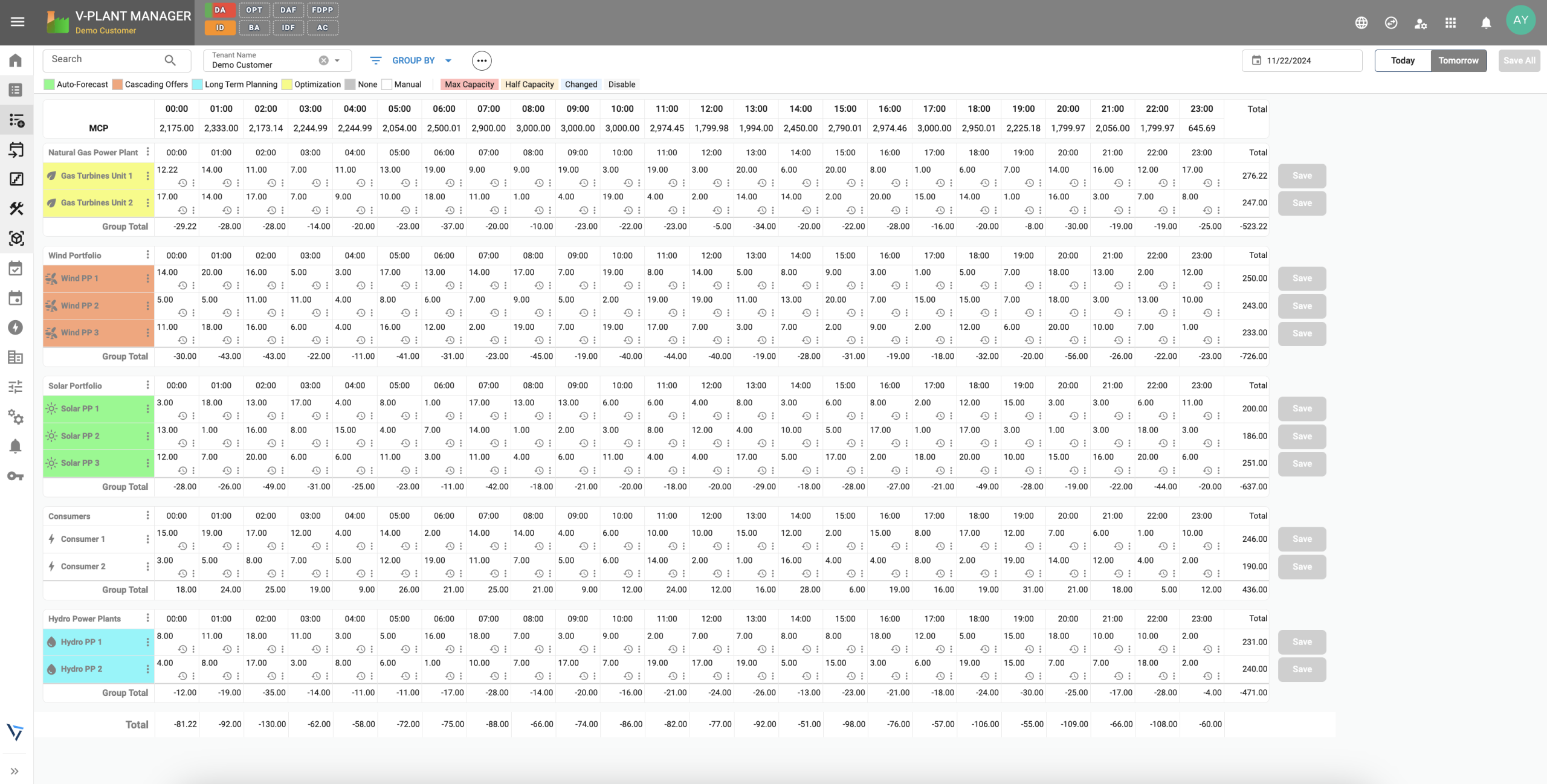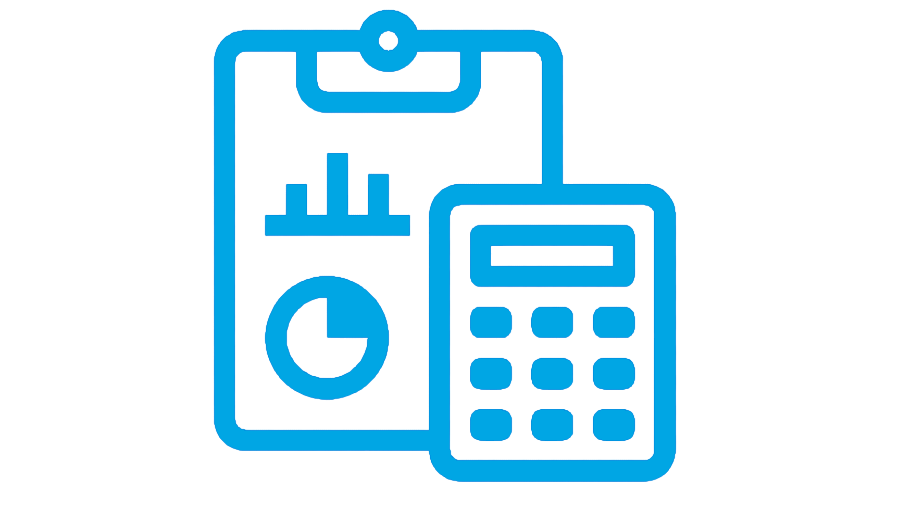
V-Plant Manager
is an intelligent platform designed for your energy production and consumption facilities, bringing all planning processes under one roof. Whether you’re creating short-term hourly schedules or planning annual strategic roadmaps, the software handles complex calculations for you, responding to your needs with flexible timeframes. This allows you to instantly adapt to rapidly changing market conditions and operational constraints, making the best decisions with confidence.

The optimization engine at the heart of the platform evaluates cost conditions to increase efficiency. Comparisons across different scenarios reveal which production profiles are financially more advantageous. Instead of wasting time on trial and error, you can now move forward with clear results based on the optimization model.

Automatic Planning
V-Plant Manager's scenario-based long-term planning infrastructure shapes your long-term strategies. When participating in the market, V-Plant Manager's stepped bidding feature comes into play. It creates separate price-volume curves for each level of your production capacity and automatically compiles the most profitable bidding structure step by step in day-ahead and intraday sessions. The power of this method allows you to maximize capacity during high price periods and minimize risks during low prices. Finally, the optimization engine combines all this data and dynamically updates your plans based on real-time conditions, technical constraints, and cost parameters.

ETS & TSO Integration
V-Plant Manager manages your Available Capacity, Definitive Daily Production Program, Minimum Steady Production Level, Load Take-Up Instruction, Load Shedding Instruction, Primary Frequency Control, Secondary Frequency Control and Fault Operations in a fully automatic, fast and secure way with the Electricity Transmission System (ETS) and TSO integrations.

Portfolio Management
Its structure, broken down into sub-categories like power plants, factories, units, and meters, allows you to manage your asset definitions and planning in detail. Define your plans for each asset in your portfolio, monitor their progress, and have the system take action on your behalf.

1. What is V-Plant Manager and who is it designed for?
V-Plant Manager is an integrated software platform that centrally manages all technical and commercial processes for energy production and consumption plants. It is designed for business managers, energy traders, maintenance teams, and portfolio managers.
2. What energy sources does V-Plant Manager work with?
It is fully compatible with renewable (solar, wind, biomass) and conventional (natural gas, hydroelectric, coal) energy plants.
3. How does asset management work?
All equipment within the facility is defined in detail. Assets are hierarchically linked and monitored in an integrated manner with performance and cost data.
4. How is maintenance and fault management performed in V-Plant Manager?
Planned maintenance schedules can be created, and field personnel can enter fault reports via mobile devices. Maintenance records are automatically stored in the system, and historical analysis is performed.
5. Can operations management be provided in V-Plant Manager?
Yes. Daily production plans, market orders, and operational changes are monitored and controlled in real time on the platform. The entire process offers 24/7 operational support and monitoring.
6. How to manage intraday operational changes?
Operational plans can be revised instantly based on EXIST price changes, system constraints, or portfolio updates. Commercial offers and plans are updated simultaneously.
7. Can TSO's notifications be made in V-Plant Manager?
Yes. V-Plant Manager automatically communicates availability and production plan notifications one day in advance via web services integrated into the energy exchange system.
8. How is integration with market transactions achieved?
Working integrated with other software platforms such as V-Market, V-Forecast and V-Sensor, the system automatically generates and sends asset plans and revises the asset plan based on the results.
9. How to optimize day-ahead planning in V-Plant Manager?
The optimization module creates the most appropriate asset plan by taking production costs and facility constraints into account, thus ensuring both profitability and system balance.
10. What do optimization algorithms do?
It supports production and commercial decisions by analyzing different scenarios. The goal is low cost, high revenue, and a secure business.
11. How is product and customer portfolio management supported?
Different production/consumption points can be analyzed on a single screen. A portfolio-based production-consumption balance can be established, and trading strategies can be optimized using this data.
12. What information is required for integration into V-Plant Manager?
Integration with other systems is possible when information such as data source type, API access, authorization levels and data sending frequency is provided.
13. How is data security ensured?
All data transmission is encrypted using TLS/SSL protocols. Role-based authorization, user access logs, and double-authentication mechanisms are used for critical operations.
14. Is V-Plant Manager available on mobile devices?
Yes. Thanks to the mobile-friendly interface and mobile application support, users can access system data and report alarms and faults even in the field.
15. What are the reporting and analysis features?
Management and technical decisions are supported by real-time graphics, KPI dashboards, outputs compatible with the energy market and system operator, and user-defined reports.
16. How to make plan estimates with V-Plant Manager?
Another part of the V-Gen product family, the demand forecasting platform V-Forecast, integrates with third-party forecast providers. It analyzes historical data, weather, and market conditions to create short-term plan forecasts. These forecasts are integrated into operational plans.
17. How to ensure compliance with regulations at energy markets?
The software is fully compliant with European energy market regulations. Notifications, data formats, and processing programs have been adapted to the latest regulations.
18. How do alarms and notifications work?
For critical events, the system sends user-specific SMS and emails. Notification thresholds are configurable, and alarm history can be reported.






